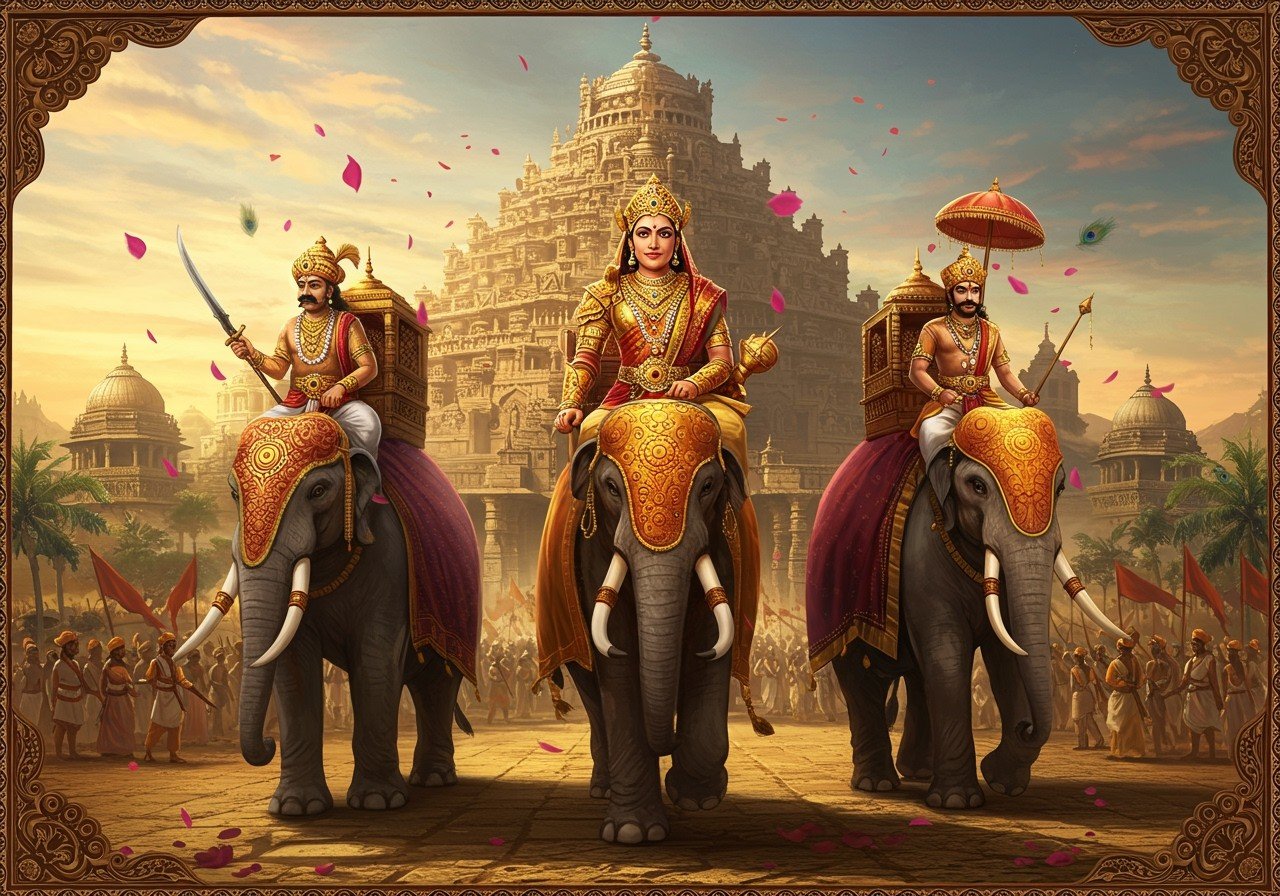
The Kakatiya Dynasty remains a significant power in Indian history, particularly in the Telangana and Andhra Pradesh regions. This dynasty, ruling from the 12th to the 14th centuries, left an enduring legacy through its prominent rulers, architectural marvels, and cultural contributions. This blog post delves into the key figures of the Kakatiya Dynasty, exploring their accomplishments and the impact they had on shaping the cultural landscape of South India.
Origins and Rise of the Kakatiya Dynasty
Emerging in the 12th century, the Kakatiya Dynasty traces its roots back to Betaraja I. The dynasty faced early challenges in establishing its authority. Orugallu (present-day Warangal) served as their capital, strategically chosen for its resources and location. Temple architecture became a cornerstone of their growing power. Social and administrative reforms laid the groundwork for effective governance. Strategic military campaigns and alliances expanded their territorial control across regions encompassing Telangana, Andhra Pradesh, eastern Karnataka, northern Tamil Nadu, and southern Odisha.
Ganapati Deva (1199-1262 AD): A Visionary Leader
Ganapati Deva’s reign stands as a pivotal period for the Kakatiya Dynasty. He significantly expanded the kingdom’s boundaries and solidified its power. His focus on trade and commerce, particularly with port cities like Motupalli, fueled economic growth. A patron of art and architecture, Ganapati Deva commissioned the construction of magnificent temples and fortifications. His administrative reforms, notably the Nayankara system, enhanced governance and efficiency.
Rudrama Devi (1262-1289 AD): A Trailblazing Queen
Rudrama Devi, a remarkable female monarch, defied societal norms and led the Kakatiya Dynasty with strength and wisdom. She navigated complex political landscapes and maintained stability, further expanding the kingdom. Her contributions extended to infrastructure development, including the construction of vital water tanks and robust fortresses. A skilled military strategist, Rudrama Devi effectively defended her kingdom against invasions. Her patronage of arts and culture, especially temple architecture, enriched the dynasty’s legacy.
Prataparudra II (1289-1323 AD): The Last Great Kakatiya Ruler
Prataparudra II’s reign marked the final chapter of the Kakatiya Dynasty. He faced mounting challenges, particularly defending against the incursions of the Delhi Sultanate. Despite these pressures, he made significant contributions to the dynasty’s cultural and artistic heritage. His administrative efforts aimed to strengthen the kingdom against external threats. Prataparudra II’s reign profoundly impacted the socio-economic fabric of the Kakatiya territories. The events leading to the dynasty’s fall in 1323 AD ultimately defined his legacy.
Cultural and Architectural Achievements
The Kakatiya Dynasty left an indelible mark through its remarkable architectural and cultural achievements. The Thousand Pillar Temple and the Ramappa Temple exemplify their unique architectural style, characterized by intricate carvings and innovative engineering. Warangal Fort, a testament to their architectural prowess, stands as a symbol of their strength and ingenuity. The dynasty’s patronage extended to literature and the arts, with a particular focus on promoting Telugu as a prominent cultural language.
The Kakatiyas promoted religious tolerance and fostered regional developments that enriched the cultural tapestry of the region. Their architectural innovations influenced subsequent South Indian temple designs for generations to come. The legacy of the Kakatiya rulers continues to resonate in the cultural heritage of South India.
Rama Rajya: Embracing Dharma and Justice
The Kakatiya rulers, inspired by the ideals of Rama Rajya, strived to create a kingdom rooted in dharma (righteousness) and justice. Like Lord Rama, they prioritized the well-being of their subjects and aimed to establish a harmonious society. At Poojn.in, we offer a wide selection of authentic puja items that connect you with these timeless values and traditions.
Rama Rajya, a concept deeply embedded in Indian culture, represents the epitome of ideal governance and societal harmony. This principle significantly influenced the administration of many Kakatiya rulers. Lord Rama’s unwavering commitment to righteousness and duty serves as a timeless example for both governance and personal life. Poojn.in offers a curated collection of sacred items to honor these traditions, including:
- Pure copper and brass Ram Darbar idols: Beautifully crafted idols for your home temple.
- Ramayana path puja sets: Complete sets for conducting the Ramayana path.
- Special Ram Navami puja items: Celebrate Ram Navami with authentic puja essentials.
- Traditional Ram bhajan books and CDs: Immerse yourself in the devotional music of Lord Rama.
These sacred items from Poojn.in help preserve our rich cultural heritage and uphold the ideals of Rama Rajya. Each product is carefully selected for its quality and ritual significance, suitable for both personal and institutional worship. Visit Poojn.in today and explore our diverse collection of authentic ritual items, combining ancient traditions with modern convenience.
Conclusion: The Enduring Legacy of the Kakatiya Dynasty
The Kakatiya Dynasty’s remarkable contributions to administration, architecture, and social reforms have left an enduring legacy that continues to shape South Indian culture today. Their vision and leadership are reflected in the magnificent temples, robust fortresses, and vibrant cultural advancements they championed. By exploring their history, we gain a deeper understanding and appreciation for the rich cultural heritage of South India.
Explore related articles on architectural wonders: Sas-Bahu Temples and Badami Cave Temples.


